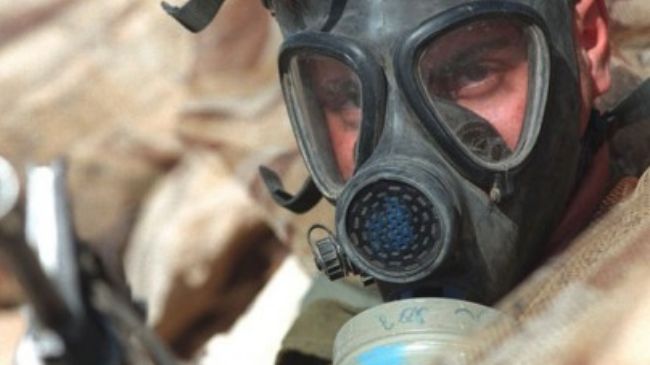Britain’s use of chemical weapons throughout history

 British Prime Minister David Cameron’s crocodile tears for the Syrian people and victims of Sarin nerve gas could hardly deceive people into believing that the reason for his hostile stance on Syria is purely the crime of chemical weapons use against civilians. But what could provoke the wrath of the public is the black history of Britain and Cameron’s predecessors in promotion and dissemination of chemical weapons across the world.
British Prime Minister David Cameron’s crocodile tears for the Syrian people and victims of Sarin nerve gas could hardly deceive people into believing that the reason for his hostile stance on Syria is purely the crime of chemical weapons use against civilians. But what could provoke the wrath of the public is the black history of Britain and Cameron’s predecessors in promotion and dissemination of chemical weapons across the world.
The UK is a signatory of the Hague Conventions (1899 and 1907), which outlaw the use of poison gas shells. However, during the First World War, British forces deployed chlorine during the Battle of Loos on September 1915. By the end of the war in 1918, a quarter of artillery shells were filled with gas and Britain had produced some 25,400 tons of toxic chemicals.
Britain used poison gases, including chlorine, phosgene, diphosgene and mustard gas. It also used irritant gases such as chloropicrin, bromacetone, chloromethyl chloroformate and ethyl iodoacetate.
After the war in 1919, the British Royal Air Force (RAF) dropped Mustard gas on Bolshevik troops, and Secretary of State for War and Air Winston Churchill suggested that the RAF use it in Iraq in the 1920s during a major revolt there.
The UK ratified the Geneva Protocol on 9 April 1930 and also signed the Chemical Weapons Convention on 13 January 1993 and ratified it on 13 May 1996. Despite the signing of the Geneva Protocol, Britain carried out extensive testing of chemical weapons from the 1930s onwards.
In the Rawalpindi experiments, hundreds of Indian soldiers were exposed to Mustard gas in an attempt to determine the amount of poison gas needed to produce a casualty on the battlefield. Being exposed to mustard gas, many Indian soldiers suffered severe burns on their skin, including their genitals, leaving them in pain for days and even weeks.
The UK’s mustard gas stockpile was enlarged between 1942 and 1943 for a possible use against German cities. Churchill also issued a memorandum advocating plans to drench Germany with poison gas and anthrax.
In July 1944, Churchill wrote a secret memorandum asking his military chiefs to “think very seriously over this question of poison gas,” saying, “it is absurd to consider morality on this topic”.
“I should be prepared to do anything that would hit the enemy in a murderous place. I may certainly have to ask you to support me in using poison gas. We could drench the cities of the Ruhr and many other cities in Germany …, and if we do it, let us do it one hundred percent,” he said.
However, the Joint Planning Staff (JPS) advised against the use of gas, arguing that this would be to the Allies’ disadvantage in France because of military reasons and the possibility of impairing “UK relations with the civilian population when it became generally known that chemical warfare was first employed by us.”
The JPS also expressed concerns about public morale in Britain, fearing that people might feel resentful if they felt a gas war could have been avoided.
Moreover, the Chiefs of Staff warned that the Nazis would have no “difficulty in holding down the cowed German population, if they were subjected to gas attack,” whereas the British population “are in no such inarticulate condition.”
“I am not at all convinced by this negative report. But clearly I cannot make head against the parsons and the warriors at the same time. […] The matter should be kept under review and brought up again when things get worse,” Churchill said in reply to the advice.
Meanwhile, the JPS examined the case of using anthrax bioweapons against six German cities but ruled this out as anthrax bombs were not available. A batch of aerial bombs was ordered from a US factory, but they were deemed unnecessary since the war in Europe was almost over.
Experiments on chemical weapons were carried out at the Porton Down research establishment between 1939 and 1989. Many former servicemen complained about suffering illnesses after taking part in the tests. It was alleged that before volunteering they were not provided with information about the possible risks, in breach of the Nuremberg Code of 1947. The case became the subject of a police investigation codenamed Operation Antler.
Chemical Defence Establishment (CDE) Nancekuke was established in 1950 as a production plant for nerve gas. A pilot production facility for Sarin, which produced about 20 tons of the nerve agent between 1954 and 1956, was also built. In addition, a full-scale production plant was planned, but following the 1956 decision to end UK’s offensive chemical weapons programme it was never constructed.







